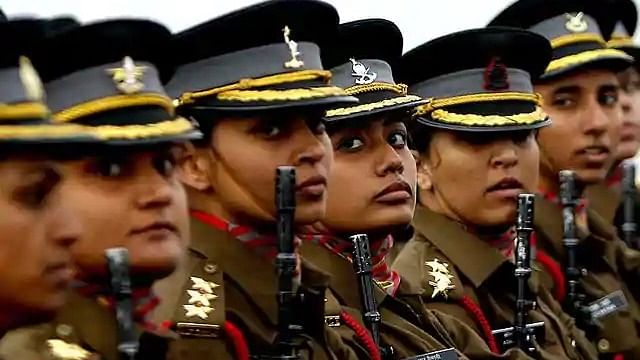Women in combat role matter of mindset, and what better place to change it than Indian Army.
The Indian Army chief, General Bipin Rawat, was caught on the wrong side of the gender debate during a recent media interview. He told News18 that the Indian Army is not yet ready for women in combat roles.
The Army chief retreated from an earlier statement in June last year wherein he had said that the process of inducting women in combat roles was moving fast and would start with “women as military police jawans”.
The volte face by the Army chief now and the rationale for it was mostly administrative in nature and missed the woods for the trees.
Courts can intervene
The issue for the Army to ponder is not whether women can be inducted in combat roles, but how to make it happen. Otherwise, it is a matter of time before India’s legal system forces the Army’s hand. It has already done so in the case of granting of permanent commission to women. Moreover, the IAF has already inducted three women fighter pilots and the Indian Navy recently confirmed that induction of women as sailors was under consideration.
Arguably, the field conditions in the Army are much more rugged and proximity to comrades and adversary poses greater challenges. But the point is that if women volunteer despite these challenges, the Army should not resist. The cultural argument put forward by the Chief of the Army Staff (COAS) that the rank and file, who are mostly of rural origin, may not be ready to accept a woman as their officer could be true but is surely not an immutable condition.
Countries that have inducted women in combat roles have not found it easy to assimilate the change and perhaps there is something to gain from their experience although there is a variance in the cultural milieu. In any case, it is a matter of mindset and what better place to change mindsets than the Indian Army.
Unless the Army’s leadership changes its perspective on how to induct women in combat roles, judicial intervention will be around the corner. The arguments of the Army chief in the interview can itself trigger litigation.
Also read: Women aren’t ready for combat roles as they have to raise kids – Army chief Gen. Rawat
A planned induction
True, there are a plethora of challenges that need to be tackled through a trial-and-error method to evolve a planned induction. In principle, woman in combat cannot seek special privileges on the ground of gender. The physical standards required for combat soldiers will have to be the same for women. However, their right to a maternity leave must be protected through administrative/institutional policies.
One is not sure how women would respond to the stringent conditions for induction in combat roles. One may hazard a guess that most parents would not be very comfortable with the idea of induction of women at the jawan level, but that still does not mean that there won’t be volunteers. Even a small number making the cut would be a major achievement.
Should the initial phase of experiment be confined to the officer level or should it be a combination of officer and jawans? Ideally, it should be both so as get a holistic understanding of the issues involved. As of now, women are inducted in the Army only at the officer level in non-combat roles. Time is now ripe to start inducting them for combat roles at the officer level and simultaneously at the jawan level for other arms and services.
Also read: Indian Army chief should know that no one feigns disability
Political acceptance
Women in combat role is a major shift in the personnel policy of the armed forces, especially the Army, which unlike the IAF and Navy has to be prepared for close combat. This is a big difference and cannot be wished away in the name of gender justice.
The issue also comes with political and strategic ramifications. There must be political acceptance for the possibility of women soldiers being taken as prisoners of war (PoW) or being captured by insurgent groups in internal conflicts. Such an acceptance is necessary because, in popular political imagination, the strategic and political effects are bound to be deeper and adverse. Considering the prolonged nature of the Army’s internal security deployment, women in uniform could attract special attention as targets by insurgent groups. These are the natural conditions of combat and require a prior acceptance at the political and military level.
Generally, resistance to change is the default institutional outlook. The Indian Army is no different and probably has much stronger resistance to change. At another level, if India has to evolve into a modern nation state, there has to be a sea change in its attitude towards women. In many ways, there is an opportunity here for the armed forces to participate in the change that is required for India to find its rightful place in the universe of nations.
Also read: The Indian Army’s now considering women in combat roles, but here’s why it’s far behind
Lt Gen (Dr) Prakash Menon, PVSM, AVSM, VSM, is director of strategic studies programme at the Takshashila Institution, Bengaluru, and former military adviser, National Security Council Secretariat.
